Do|Co|Mo|Mo|Japan|14 : Nanzan University : Antonin Raymond
- john barr
- May 29, 2020
- 4 min read
Updated: Apr 20, 2023
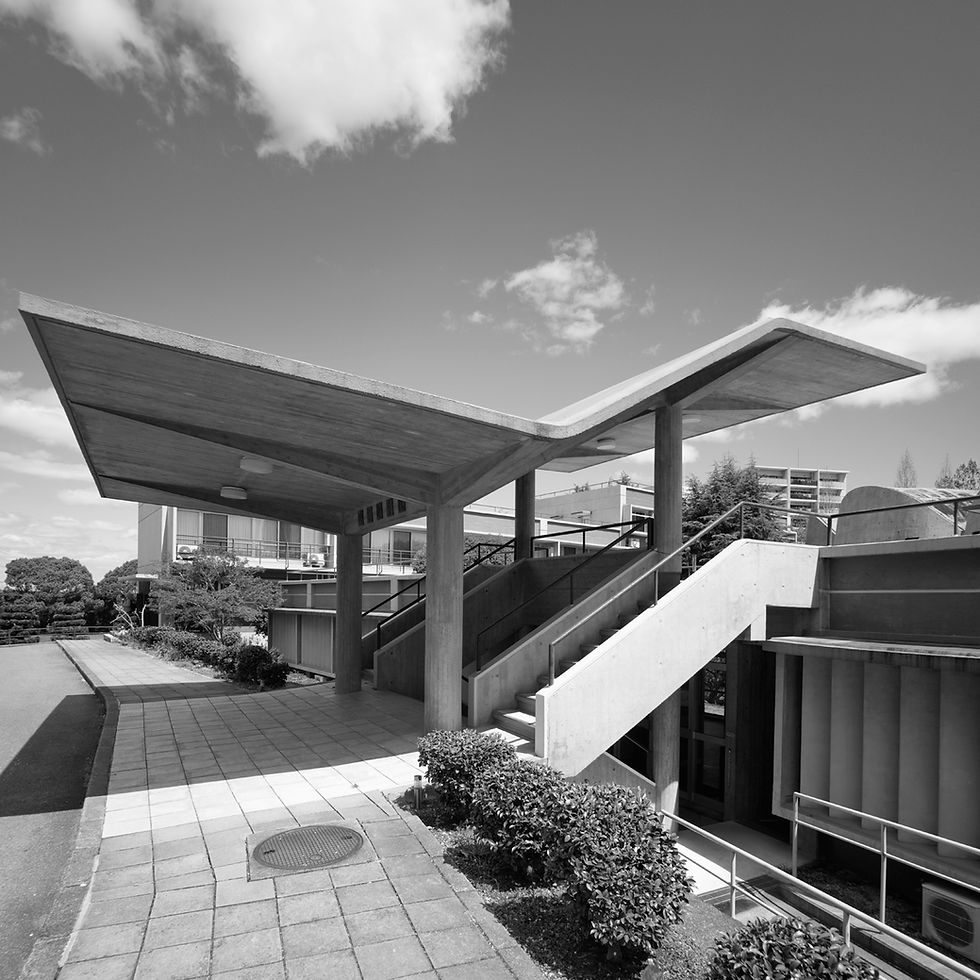
Do|Co|Mo|Mo is an international organisation dedicated to the Documentation and Conservation of buildings, sites and neighbourhoods of the Modern Movement. The Japanese branch has selected 100 works as representative of the development of the Modern Movement in Japan. In a series of short posts I will feature some of the selected works that I have had the chance to visit and photograph. This post features the Nanzan University Campus in Nagoya, designed by Antonin Raymond and built in 1964...
Background
Raymond was a Czech architect who emigrated to the USA, where he worked for three years for Cass Gilbert before joining Frank Lloyd Wright’s studio at Taliesin in 1916. After serving in the U.S Army during WWI he re-joined Wright’s office and moved to Japan to work on the Tokyo Imperial Hotel, eventually parting company with Wright and establishing his own office in Japan in 1921. This is the third post I have written featuring Raymond’s work in Japan and there is a fuller description of his career in the post published January 6 2020.
The earliest modernist architects in Japan were heavily influenced by German architecture, most notably by the Bauhaus and German Expressionism. After WWII a younger generation, epitomised by Kunio Maekawa, Takamasa Yoshizaka and Junzo Sakakura, who had all travelled to Paris and worked in Corbusier’s office in the late 1920’s and 1930’s, came to the fore and Corbusier became a major influence on Japanese modern architecture.
As Corbusier moved away from his pre-war, frame-based architecture to the more massive and sculpturally expressive forms of his post-war buildings, Japanese architects followed. Raymond was aware of this, and deplored it, blaming Corbusier’s use of concrete in projects such as Ronchamp and Chandigarh for creating brutalities in post-war Japanese architecture.[i] Raymond himself promoted a strictly modernist architecture, based on internationalism, modern technology and principles taken from the Japanese traditions of simplicity, lightness and economy of material, and these elements are evident in his design of the Nanzan University Campus.
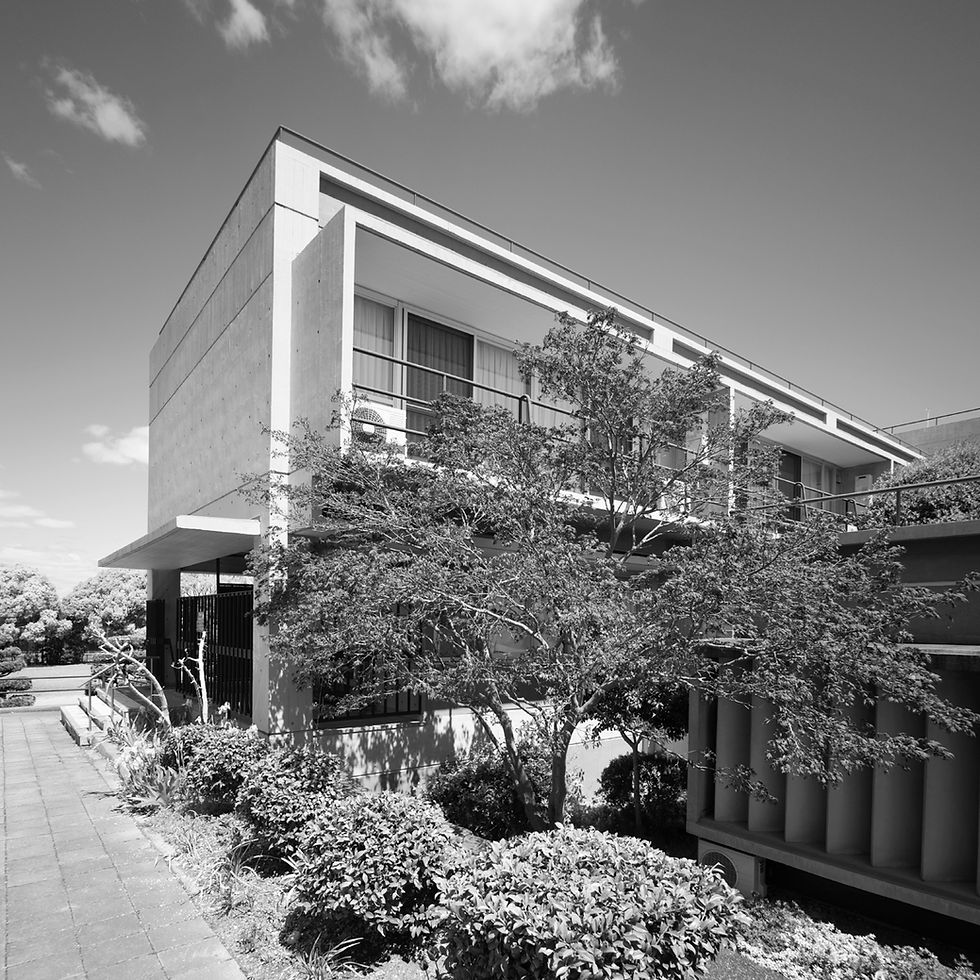
Nanzan University : Antonin Raymond (1964)
Nonetheless Raymond was not immune to the movement towards more mannerist, sculptural forms. His design for Gunma Music Centre (see post dated Jan 6 2020) is a thin, efficient, folded-plate structure, but begins to move away from the refinement of post and beam towards more expressive form, and his design for the Chapel to the Divine World Seminary that sits within the Nanzan University campus wholeheartedly adopts the massive, sculptural language of Ronchamp.
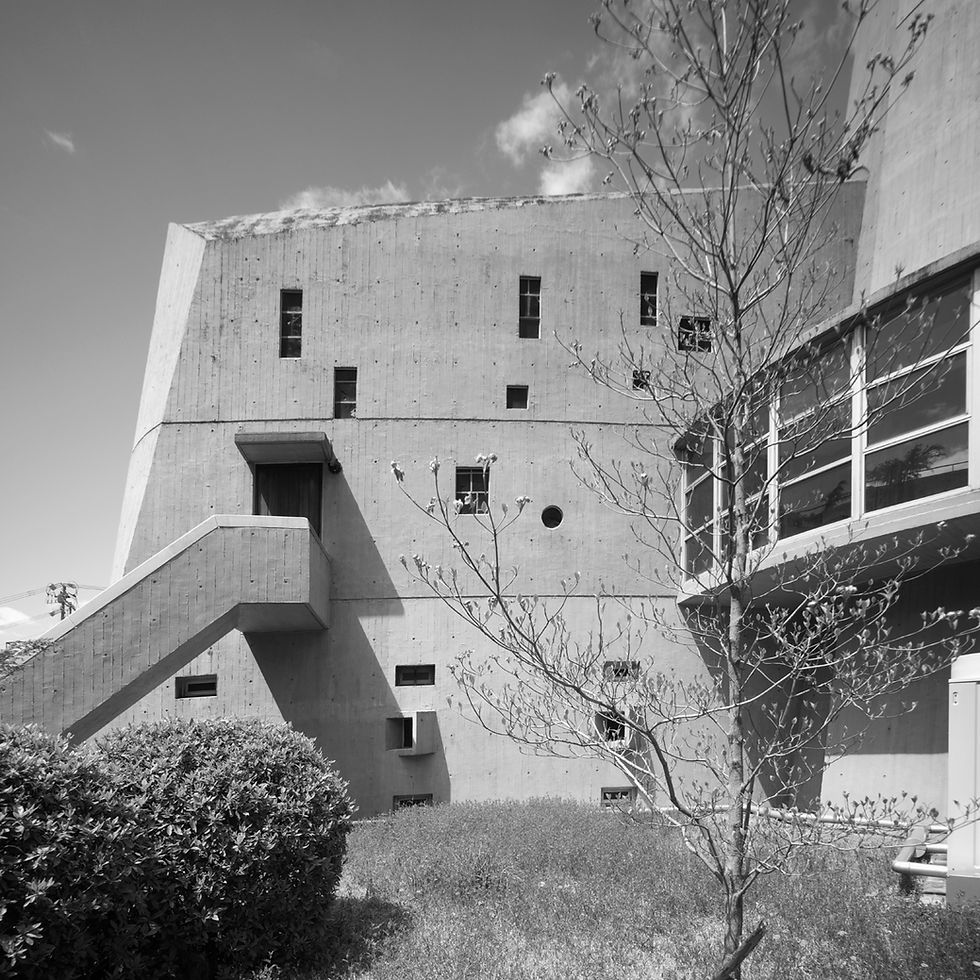
Nanzan University : Chapel to the Divine World Seminary : Antonin Raymond (1964)
Design
The campus is one of the largest projects that Raymond undertook and consists of eight groups of buildings that step down either side of an axial route through the campus that follows the ridgeline of an undulating site. It was Raymond’s aim to disturb the existing contours as little as possible. A variety of functions and spans are accommodated by use of different roof structures, sometimes beam and slab, sometimes thin-shell vaults, all pulled together visually by use of the same material (concrete), the same colours and the same façade treatment (concrete frame and vertical concrete louvres). The exception is the Chapel to the Divine World Seminary.

Nanzan University : Antonin Raymond (1964)

Nanzan University : Antonin Raymond (1964)

Nanzan University : Antonin Raymond (1964)
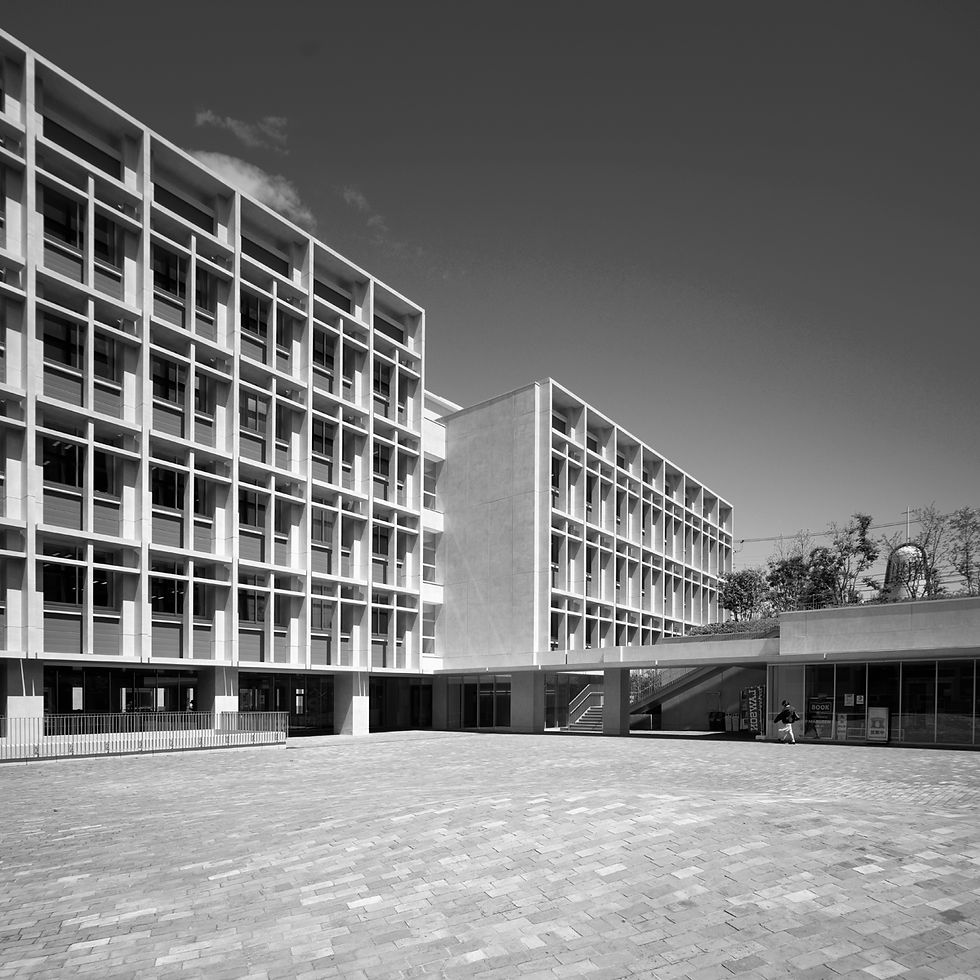
Nanzan University : Antonin Raymond (1964)
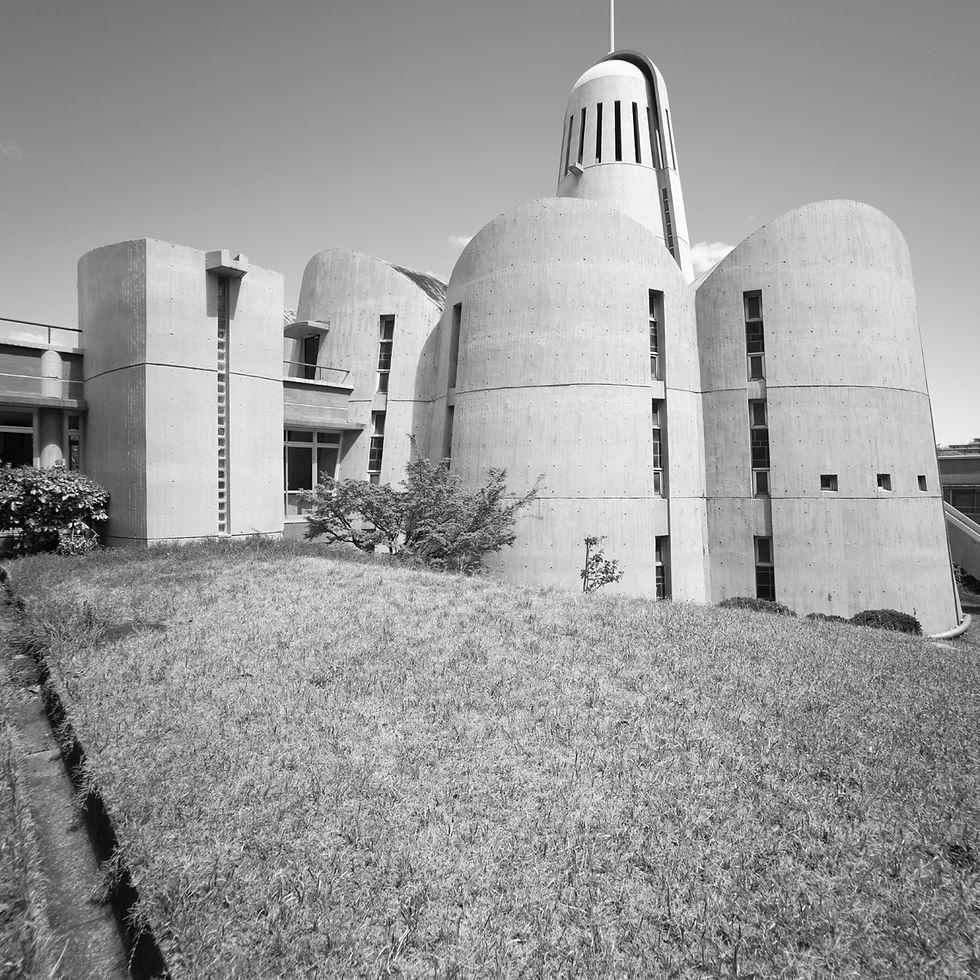
Nanzan University : Chapel to the Divine World Seminary : Antonin Raymond (1964)

Nanzan University : Chapel to the Divine World Seminary : Antonin Raymond (1964)
Significance
The initial selection of 100 works by DoCoMoMo Japan includes five by Raymond, more than Junzo Sakakura (post dated Feb 2 2018), the same number as Togo Murano (post dated Jul 2 2019) and less than only Kunio Maekawa and Kenzo Tange, the two preeminent Japanese modernists, who each have six entries. Raymond had a long and successful career in Japan, and these selections indicate that he built a significant number of important buildings. However it is not clear that he was influential, although a number of Japanese architects, including Maekawa and Junzo Yoshimura, worked in his office before going on to individual success.
He was not influential in the way that Corbusier was influential for example. This might have been precisely because he lived and worked in Japan and had built a large number of buildings there. Perhaps he became too familiar and lost the exotic appeal of the foreigner. On the other hand, Japanese architects have a long history of ‘borrowing’ ideas from unacknowledged sources that are not widely known in Japan and there was little chance of being able to do that with Raymond’s work, although Raymond claimed exactly that with reference to his design for the Readers Digest Building (post dated Jan 6 2020).
Ironically, Raymond himself was guilty of this when he ‘borrowed’ liberally from an un-built project by Corbusier when designing his own summer cottage at Karuizawa in 1933. It might have gone unnoticed had the project not been published and picked up by Corbusier, who wrote to Raymond congratulating him on his design whilst gently chiding him for his ‘mistake’ in not acknowledging its source. And this might point to another reason for Raymond’s limited influence. Accomplished as he was, much of his work was derivative. He was continually experimenting with different styles and from his first independent project in Japan, the Tokyo Women’s Christian University, to one of his last, the Nanzan University Campus, he drew on a variety of sources.
In his design for the Tokyo Women’s Christian University (post dated Oct 5 2018) the library and residences draw heavily on Wright, whilst the chapel is a virtual copy of August Perret’s Notre-Dame du Raincy. At Nanzan University we have seen how he referenced Corbusier’s Ronchamp in his design for the Chapel to the Divine World Seminary. Raymond was a remarkable architect, who had a remarkable career, and his buildings are always accomplished, but it is difficult to pin down a ‘Raymond Style’ or even a ‘Raymond Approach’ that others could emulate and this might have limited his influence or, at least, made it difficult to discern.
All images by John Barr unless otherwise noted
© John Barr 2020
[i] Stewart. David B. The Making of a Modern Japanese Architecture : 1868 to the Present. Kodansha International (1987) pg.168-9.

Comments